#t. e. shaw
Explore tagged Tumblr posts
Text







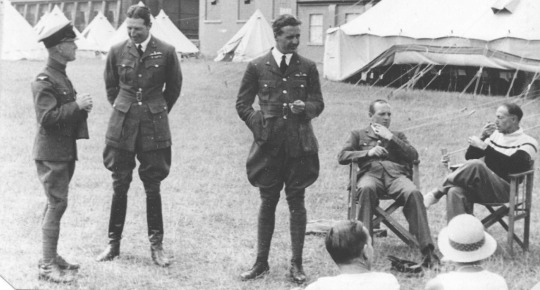




compilation of T. E. Lawrence/Shaw images where only half of his face is visible (side profile)
#Reason?#Just 'cuz#Also I feel like this would do good to someone#lawrence of arabia#t e lawrence#t.e. lawrence#t e shaw#t. e. lawrence#t. e. shaw#ww1 history#history#photographs#old photographs#old photo
93 notes
·
View notes
Text
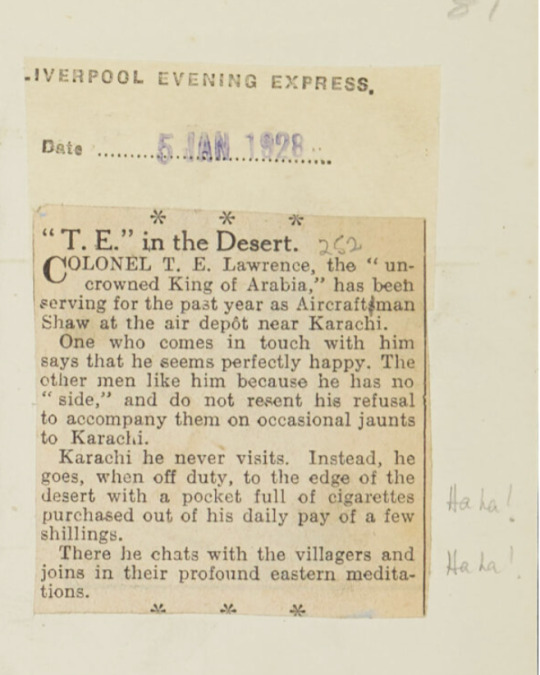
T.E. Shaw's own comments on a press clipping about his life in India.
53 notes
·
View notes
Text


Parallels
#ralph fiennes#british actors#cinema#actor#british cinema#: thinking about you 💙:#conclave2024#conclave#cardinal thomas lawrence#thomas lawrence#cardinal lawrence#lawrence of arabia#peter o'toole#classic cinema#little ned#jacopo lomeli#t e lawrence#t.e. lawrence#t.e. shaw
22 notes
·
View notes
Text
Oh hey is that my fandom from a decade ago rising up to meet me?
****
The Portrait Is Watching You
On TE Lawrence and the folly of biography
A dear friend once declared, “I want to see you write a book on why SOME people shouldn’t write about Lawrence…”
“NOBODY should be writing about Lawrence!” I interjected.
“...didn’t you JUST write a story about him?”
“YES!” I have, in fact, written a few.
It is an almost irresistible temptation, because TE occupies such a sparkling place in history and art that, entirely apart from any quirks of his personality he would already be a prime target for examination by all and sundry. Add to this all the buttons and questions of his identity - heroism, failure, friendliness, isolation, queerness, kink, trauma - the first instinct of even the most casual critic is to find out some aspect that nobody has puzzled out so well, and in doing so claim a piece of him for England for oneself.
This is not to say all his eager biographers LIKE him. Indeed, in puzzling out the pieces, Richard Aldington first and famously despised what he discovered, to the point of attempting to dodge the accusation of libel by labeling his book “A Biographical Enquiry” - he’s just asking questions, folks. I keep a quote from said book on my desktop:
The irregular situation of a father who had four daughters by his wife and five sons (of whom TE Lawrence was the second) by another woman is obviously the clue to Lawrence’s abortive career and tortured character. Of course the fact must not be abused and dragged in to explain everything -
The image of that quote is very fondly named “fuck you too Aldington.jpg” by the bye. I harbor a cherished hope someday to have the works of Aldington and Lowell Thomas on my shelf, bound together in caution tape. They are very much two sides of a coin.
Lowell Thomas made a name for himself as a sort of adventuring journalist. He wrote about the joys of travel and was paid in free tickets by rail companies for the advertisement. All places he went were exotic, all people he met extraordinary. The man was made for the propaganda machine, and while it was useful, TE used it. And when it ceased to be useful, TE tried to refuse it and Lowell Thomas refused to understand. Lowell Thomas had his own piece of Lawrence - in some ways, the first one. A flattering one? The first chapter of With Lawrence In Arabia is, after all, titled “A Modern Arabian Knight.” The second, worse, calls TE “The Uncrowned King of Arabia.”
I am always reminded, in these and the awfully orientalist captions of Thomas’s photographs, of a story told by Sheikh Hamoudi in Lawrence By His Friends. Hamoudi was surprised by the request for tales about TE because he hadn’t known yet that he was dead, so there’s a terrible sort of shocked sadness in his chapter of the book. He recalled going with TE to his home in Oxford before the war, along with Selim Ahmed, known as Dahoum. As a foreigner relying on the native TE for translation, he observed the excitement of people who came to talk with them, and that TE was repeatedly smiling and saying “No” to people requesting something. On interrogation, TE revealed that these people wanted to pay for photographs - they wanted to pay a great deal, apparently. Hamoudi challenged him for refusing, and TE Lawrence challenged him right back, saying it would make them a monkey and the man displaying that monkey for the public.
TE Lawrence knows what you are doing with him. He knows the shape of history, his story, the narrative built around him. He knows it’s happening, that there’s no way to stop it, that there’s hardly any point in trying to guide it, but he’s trying to guide it all the same. He is watching you, from the past, take him and reshape him into a piece of art that you can own.
“Poor Joan, I was thinking of her as a person, not as a moral lesson,” TE says, to Charlotte Shaw, defending his distaste in the ending of GB Shaw’s Saint Joan. In two consecutive letters, TE contrasts the play - turning away from Joan’s suffering to the reflection of the fire on the faces of her tormentors - with his own work specifically describing his torture at Deraa. Whatever else one might take from this, not the only time TE expressed fellow feeling for the sufferings of a female protagonist, I am inclined to hear him saying this: “Poor me, I was a person, now I’m a moral lesson.”
It’s easy to summon some righteous response to Aldington, and indeed he sparked a fury of refutations and qualifications and publications of previously withheld documents in TE’s defense. Fewer are thinking of defending Lawrence from With Lawrence in Arabia, but Lowell Thomas’s work has its own broad spreading ripples of effect, images of Lawrence in pure white, the archetype of the White Savior, larger than life (better put Peter O’Toole in the role, at nearly a foot taller than TE himself, he has the stature for it.) Most biographers position themselves to be less sensational, less confrontational than these.
I find myself, after a decade of not writing this ode to the folly of writing about Lawrence, falling into the trap in the footsteps of a much more reasonable writer. Edward Said, wonderfully, wrote a scathing response to Knightley and Simpson’s The Secret Lives of Lawrence of Arabia. Like Aldington, these sensationalist biographers did meticulous research but made extraordinary claims on it, and Said wisely declares that it is folly to pinhole Lawrence as anything. Said declares that Lawrence can only be pinned down as a man who wouldn’t be pinned down to anything. Defiant against definition, to the end, as a defining trait.
I like this. I especially like, in it, the face of Lawrence studying the portraits made of him, figuring out who exactly is being depicted there. TE did find his image very interesting, and talked about various incarnations of it like they were people he was watching, to find out how they tick. Among the accusations that have been leveled against him, one of the strongest is that he was a social chameleon, wearing the personality expected of him in every context.
I like how Said mentioned TE’s home at Clouds Hill, treated as a generally owned space rather than a possession of TE as host and owner. Said could not resist also saying this was an aspect of TE claiming and then refusing everything that came into his hands. It might be. Said might have the right of it.
But I think all we eager writers carry too much of ourselves into the space of this particular chameleon, so he takes on the colors we place as his backdrop. I know a few people who remind me of TE - a dear friend struggling with scrupulosity OCD, another who is trying his best to catalogue the behaviors and motivations of his own neurodivergence by watching other people, a third who is awkward and brilliant and eager to share everything he knows and has nobody, really, to talk to. The TE I would write would look an awful lot like them.
The TE I would write would be wonderfully human, giving Charlotte Shaw a full description of the eating habits of a cat he gave an eclair, doing her husband the hilarious disservice of legally taking his name when GB Shaw said it troubled him as much as Lawrence must trouble TE, forcing GB to tell people that TE was not his son for the rest of his life - but I am that terrible fool of fools, a fan. I’m the worst of all to write about TE Shaw, that little shit.
11 notes
·
View notes
Text
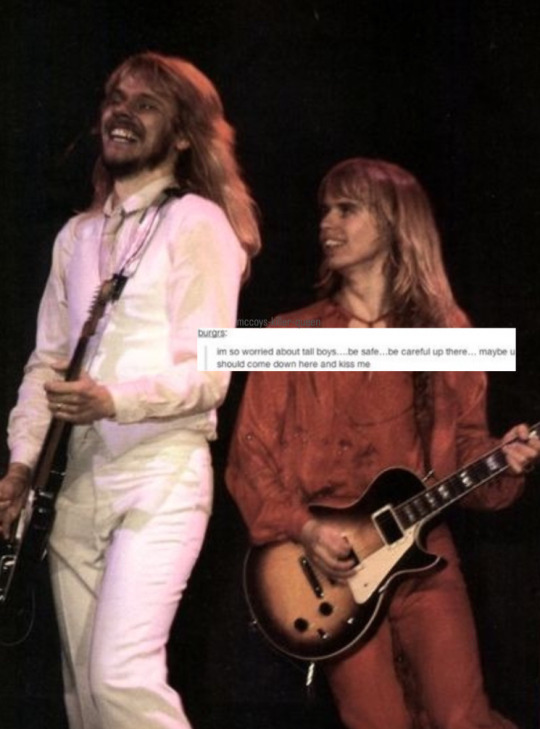
something something terror twins something something guys being dudes
#styxposting#styx#james jy young#tommy shaw#i recycled this from a steve and phil edit i made YEARS ago bc these two are t h e s a m e as them but somehow gayer
14 notes
·
View notes
Text
for everybody's glee I've got more pain coming
4 notes
·
View notes
Text
As Aisley moved closer, Kara continued to step back, almost following her lead towards the outside in a sense. Would it be better or worse to keep the demon within the bar or outside in the world? She didn't think there really was a better or worse in this situation, just a how it was. And how it was was Aisley, possessed, and losing the battle against the demon that was trying to claw its way back to the steering wheel Aisley had stolen away from it.
Kara only stopped moving when she felt her back press up against the doors of the establishment, keeping her momentarily contained and weighing her options as Aisley struggled. She wanted to help, she so desperately wanted to help - but maybe the best way to do that was to find someone else who could better help than she could.
"I'm not leaving you," she said carefully, watching the witch - or was it the demon, now? "I'll get you help, Aisley. We'll - you'll be okay...I'll find someone who can help and come back..."
As the demon rose back to her feet Kara pushed back on the doors to make a run for it and do as she said. Find someone who could actually help.

Aisley dragged herself towards the door, her mind focused on reaching the outdoors so she could try to ground herself in the earth. It might give her the boost she needed to shove the demon out of her. Moreover, she needed to get as far away from Kara as possible. Bad enough the town seemed to be suddenly full of demons creating chaos everywhere, possessing people and getting them hurt or killed.
But Kara . . . she was one of the town’s wolves.
The very idea of a werewolf possessed sent a shiver through her. If humans could cause so much trouble, how much worse would it be for a wolf? Or a vampire? Could they be possessed? Aisley didn’t know, and she didn’t want to find out.
“Try . . . trying . . .” she coughed out in response to Kara’s words.
The demon struck, and she folded over her knees, head pressed to the ground as she fought, feeling her body shaking as the clear, clean natural magic clashed with the black of the pit. She could feel herself being dragged back, and she didn’t know whether or not she screamed as she tried to hold it off.
Just another moment.
“K-Kara . . . r-run . . . go!”
Then felt herself swatted to the side yet again and the demon’s fury rushed through her veins. It shoved itself to a standing position and turned, eyes burning black to stare at Kara.

"You should have run."
#m; kara sykes#w; aisley shaw#t; kara & aisley 001#e; hell is here festival#//we can close this here with kara fleeing the scene unless you've got some other torment for her up your sleeve! <3
21 notes
·
View notes
Text
a little late for this but idgaf. my university shut down for election day so have my thoughts on redacted couples costumes!!
milo and sweetheart: morticia and gomez addams DUHHHH AND THEY ACT LIKE IT. this or kermit the frog and miss piggy (you can choose who’s who but in my heart of hearts milo is miss piggy c’mon now)
david and angel: toji fushiguro and the fucking worm from jujutsu kaisen. david was convinced because of how simple the costume is for him; just slapped on his black muscle compression t-shirt and found some big ass pants and called it a night. meanwhile angel slathered their entire body + their tank top and shorts in purple paint and put on a bald cap. (david carries angel on his shoulders the entire night)
asher and baabe: cruella deville and ash just as a dalmation dog (baabe is dragging him around with a leash and he’s living his best life) this or mermaid man and barnacle boy.
sam and darlin’: octavious and jedidiah from night at the museum come ON. literally no question about it. if sam was more fun, darlin’ would have them go as clawdeen and draculara from monster high, but he will probably never cave.
group shaw pack costumes: the walking dead themed. sam is rick. david is negan. ash is glenn. milo is michonne. darlin’ is daryl. sweetheart is maggie. baabe is carol. angel is carl. and they’re not dressing based off of the characters’ relationships within the show or else things would be weird.
vincent and lovely: just any tim burton couple. jack skellington and sally? emily and victor from corpse bride? edward scissorhands and the girl whose name i forgot? it’s either that or walter white and jessie pinkman.
damien and huxley: deadpool and wolverine (again you can pick who’s who but i think it’s obvious)
gavin and freelancer: donkey and dragon from shrek. to be clear gavin is the dragon and he’s wearing a slutty pinkish-reddish dress with his tail on full display, a pair of fake wings, and a full face of makeup while freelancer is in a donkey onesie from walmart or something. oh and caelum dressed up as the gingerbread man.
lasko and dear: if you wanna go basic, milo thatch and kida from the animated atlantis movie. but that’s boring and lasko doesn’t just wanna be himself. so if you wanna be fun and accurate about it, they’d be gimli and legolas from lord of the rings. lasko is gimli. let him live out his d&d, fantasy-loving dreams.
porter and treasure: phantom of the opera and christine. masc treasure can dress up in a white suit or just anything fancy and white, doesn’t have to be a dress. i just need phantom!porter hnnngh. alternatively if they’re feeling a little goofier they’d go as marceline and princess bubblegum from adventure time.
anton and his lover: no one talks about them enough i will bring them up at any opportunity. that being said, wall-e and eve. anton is wall-e and his lover is eve and they hold a little plant together. i’m crying.
#redacted audio#redacted asmr#redactedverse#redacted milo#redacted david#redacted asher#redacted sam#redacted vincent#redacted damien#redacted huxley#redacted gavin#redacted lasko#redacted porter#redacted anton#halloween
172 notes
·
View notes
Text
Some photographs I scanned from "Lawrence of Arabia: The Life, The Legend" by Malcolm Brown since I saw they haven't been digitized (from my knowledge) or they are but aren't in as good a quality










#im particularly happy i finally have a digital version of the pic featuring mrs shaw#be ready for letter transcriptions soon because i digitized them as well#lawrence of arabia#t e lawrence#t. e. lawrence#t e shaw#t. e. shaw#history#ww1 history#old photographs#old photo
68 notes
·
View notes
Text
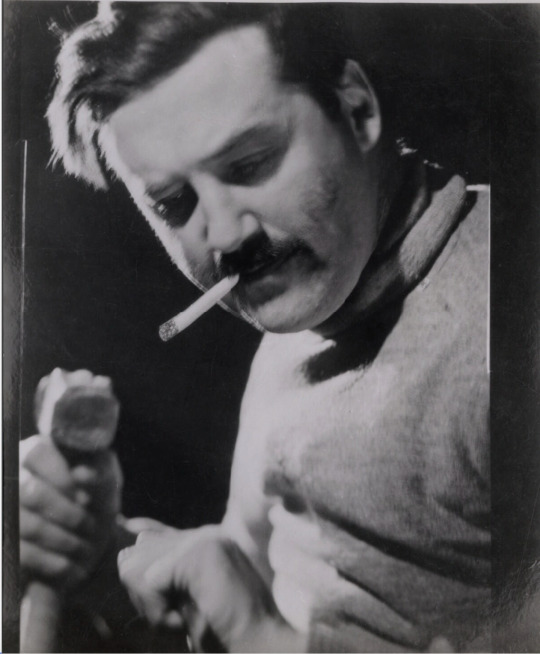
T.E. Lawrence to his friend, the artist and sculptor Eric Kennington in a letter from June 16th 1927:
"Do you really like naked women? They express so little."
#still thinking about the letter to an unknown recipient from that day @nerdyhistoryenjoyer transcribed#he wrote tons of letters on that day#to his lawyer#his mom#jim ede#eric kennington#and this mysterious other person#obviously had a day off and time to think#about naked women and sweaty airmen#tel#t.e. shaw#t.e. lawrence#t e lawrence#art#it's actually the postscript
15 notes
·
View notes
Text
Would it be the first time someone waved a random object such as a broom in their direction and treated them like scum beneath their boot? Nah. But Bandit had half a mind to make it the last. "Fuck off, cub scout. I ain't some run-of-the-mill vermin. You new 'round here or something?"

@ofrevolvtions ( for bandit )

"Eugh—what the fuck?" Morrigan shouts through the muffle of his ash mask. He grabs a broom and with shaking hands (what if it has rabies) he begins to wave it towards the creature, "GET! SHOO!" he shouts, as scarily as he can.
1 note
·
View note
Text

Probably this is my fav pic of the Little Ned 🐪
11 notes
·
View notes
Text
Upcoming confirmed appearances: April solicitations + next books
We're eating good!!
Doctor Strange of Asgard #2 (of 5)

Derek Landy (W) • Carlos Magno (A) • COVER BY GEOFF SHAW
VARIANT COVER BY GODTAIL • VARIANT COVER BY DAN PANOSIAN
MARVEL UNIVERSE CONNECTING VARIANT COVER D BY CHRIS GIARRUSSO
MARVEL UNIVERSE CONNECTING BLUE LINE SKETCH VARIANT COVER D BY CHRIS GIARRUSSO
• Doctor Strange went to Asgard to become its Sorcerer Supreme. But now he’s covering up a murder – one that Thor would be furious to hear about. And as if that isn’t enough, it turns out Asgardian landlords also charge rent.
• Strange will have to find a killer – and a job – while gaining mastery over Asgardian magic, dodging Thor’s mounting suspicions and evading mysterious assassins. Maybe moving to the Land of the Gods wasn’t such a good idea…
32 PGS./Rated T+ …$4.99
Moon Girl and Devil Dinosaur #1 - 10th Anniversary Special


BRANDON MONTCLARE & JUSTINA IRELAND (W) • NATACHA BUSTOS & LUCA CLARETTI (A)
Cover by NICK BRADSHAW • Variant Cover by NATACHA BUSTOS
VARIANT COVER BY Anand Ramcheron
HAPPY 10th BIRTHDAY, LUNELLA!
• It’s a birthday celebration a decade in the making, and the whole MARVEL UNIVERSE is invited!
• But MOON GIRL is bringing her own agenda to the party – what could her secret plans be?
• The mischievous IMPOSSIBLE MAN threatens to upend the festivities – unless LUNELLA can rally her guests the way only the SMARTEST PERSON IN THE MARVEL U can!
• PLUS: Who is DEVIL GIRL AND MOON DINO?!
32 PGS./ONE-SHOT/Rated T …$4.99
Hulk & Dr. Strange #1 (one-shot)
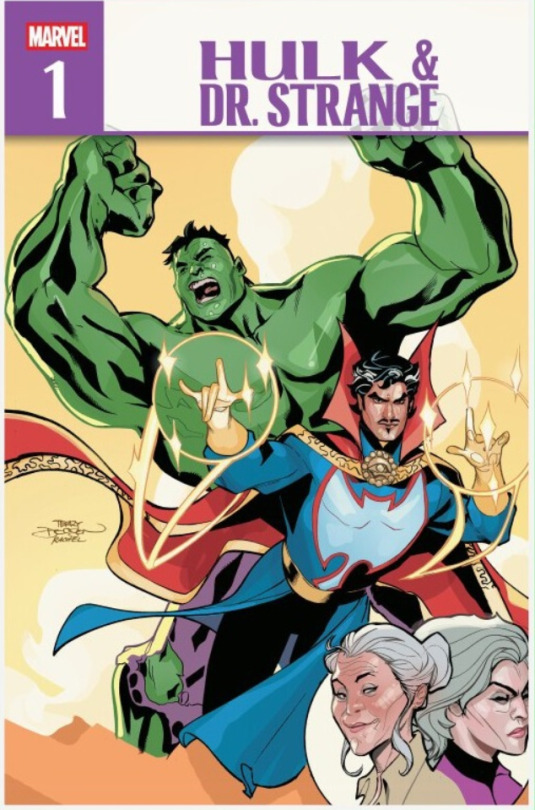
Coming next May!
BONUS
Incredible Hulk #24

PHILLIP KENNEDY JOHNSON (W) • NIC KLEIN (A/C) • VARIANT COVER BY TBA
MARVEL VS. CAPCOM VARIANT COVER BY BENGUS
MARVEL UNIVERSE CONNECTING VARIANT COVER E BY CHRIS GIARRUSSO
MARVEL UNIVERSE CONNECTING BLUE LINE SKETCH VARIANT COVER E BY CHRIS GIARRUSSO
VARIANT COVER BY DOALY
MUSCLE VS. MAGIC!
The newly returned Bruce Banner leads Charlie to New York City to seek an audience with DOCTOR STRANGE…but are met instead by someone they don’t expect! When a magic rite goes horribly wrong, can Banner put aside his terror of Hulk…and will Hulk put aside his hatred of Banner in order to save them? Leads straight into Incredible Hulk #25, featuring a fan-requested “Hulk Vs.” rematch for the ages!
32 PGS./Rated T+ …$3.99
----
There's also a mention in Kid Juggernaut's reprint series but (SPOILER) that's not the real Stephen so I'm skipping this one.
#doctor strange#stephen strange#clea strange#loki laufeyson#hulk#bruce banner#moon girl#lunella lafayette#devil dinosaur#marvel comics#solicitations
58 notes
·
View notes
Text
happy pride month to t e “lawrence of arabia” shaw for telling e m forster he was afraid to read maurice in case it gave him incurable homosexual thoughts
23 notes
·
View notes
Text
Masterlist
House of the dragon

My Queen (Aemond Targaryen x female reader)
Aemond and Rhaenyra's daughter, the reader was extremely close as children and were on the precipice of being betrothed, until reader was forced to move to Dragonstone after Luke took Aemonds eye and when the reader returns for Luke's petition for the driftwood throne, no one could prepare for the tension (mainly sexual lol) between the two. Warnings: mentions of violence, lil angst, incest (uncle & niece), oral sex (m receiving), public handjob, fingering, missionary sex, porn with plot, short slow burn, Aemond is head over heels for you, soft! Aemond.
The Black phone
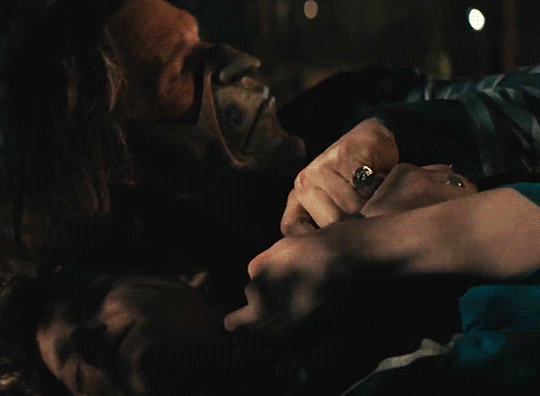
Breed (Albert Shaw/The grabber x Reader)
Why? (Albert Shaw/ The grabber x reader)
P♥r♥o♥v♥e♥ ♥I♥t (Albert Shaw/ The grabber x reader)
Do you believe in magic, Doll? (Albert Shaw/ The grabber x reader)
Fallout
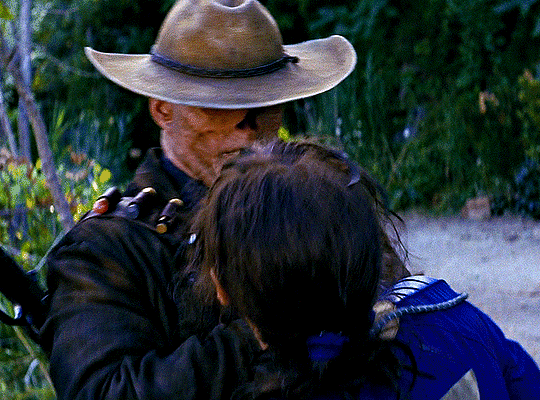
TBA
Game of Thrones

TBA
AHS

TBA
Stardew Valley

TBA
Vice principals

Goddamn it Gamby! (Lee Russell x AFAB reader)
Be mean to me (Lee Russell x female reader)
#cooper howard#cooper howard x reader#lucy maclean#walton goggins#lee russell#fallout#ahs fandom#stardew valley#vice principals#the black phone#the grabber x reader#hotd#got#game of thrones#aemond targaryen x reader#aegon ii targaryen#rhaenyra targaryen
74 notes
·
View notes
Text

JULY 5, 2025 RELEASE
All my videos can be found here, full release under the read more! I am also offering the three Notebook videos as a bundle for 40 USD!
ORDER FORM HERE
This release includes: Gypsy (Montego), Eurydice, Joy, The Notebook x3
GYPSY June 30, 2025 | Broadway | 4K MP4 (11.67GB) | bikinibottomday’s master Cast: Montego Glover (t/r Rose), Danny Burstein (Herbie), Joy Woods (Louise), Jordan Tyson (June), Kevin Csolak (Tulsa), Lesli Margherita (Tessie Tura), Lili Thomas (Mazeppa), Mylinda Hull (Electra/Miss Cratchitt), Mila Jaymes (Baby June), Ken Robinson (u/s Uncle Jocko/Kringelein), Summer Rae Daney (Baby Louise), Marley Gomes (Uncle Jocko Kid), Jace Bentley (Carmichael/Newsboy), Brandon Burks (Georgie), Hunter Capellán (Uncle Jocko’s Kiddies), Tony d’Alelio (Little Rock), Kyleigh Vickers (Balloon Girl), Kellie Jean Hoagland (Edna), Aliah James (Geraldine), Brittney Johnson (Agnes), Zachary Daniel Jones (Angie), Ethan Joseph (Uncle Jocko’s Kiddies), Andrew Kober (Mr. Goldstone/Cigar/Bourgeron-Cochon), Krystal Mackie (Thelma), Joe Osheroff (s/w Weber/Pastey/Phil), Cole Newburg, Majo Rivero (Dolores), Sally Shaw (Marjorie May/Renée), Brendan Sheehan (Yonkers), Thomas Silcott (Pop), Jayden Theophile (Uncle Jocko’s Kiddies/Newsboy), Iain Young (s/w) Notes: Excellent 4K capture of Montego’s debut as Rose! Act Two starts about 40 seconds late. Some washout on wider shots. Blackout between one of the strip sequences, no action missed. Wandering and some extended periods of unfocusing throughout (longest being about 30 seconds). Includes curtain call, audio fed from external source. https://flic.kr/s/aHBqjCk3Hh | ASKING $20 USD NOT FOR SHARING EXCEPT THROUGH ME UNTIL JANUARY 2, 2026
EURYDICE June 27, 2025 (M) | Off-Broadway | 4K MP4 (6.4GB) | bikinibottomday’s master Cast: Caleb Eberhardt (Orpheus), Maya Hawke (Eurydice), Brian d'Arcy James (Father), Maria Elena Ramirez (Loud Stone), Jon Norman Schneider (Little Stone), David Ryan Smith (Big Stone), T. Ryder Smith (A Nasty Interesting Man/Lord of the Underworld) Notes: Good 4K capture of the closing matinee! Starts about a minute in. Some head obstruction on the left that blocks off some action. Often at an angle. Frequent wandering and unfocusing throughout. Includes curtain call, audio fed from external source. https://flic.kr/s/aHBqjCjBYR | ASKING $15 USD NOT FOR SHARING EXCEPT THROUGH ME UNTIL JANUARY 2, 2026
JOY June 23, 2025 | Off-Broadway (Previews) | 4K MP4 (8.34GB) | bikinibottomday’s master Cast: Betsy Wolfe (Joy), Nora Mae Dixon (Young Joy), Adam Grupper (Rudy), Jill Abramovitz (Toots), Brandon Espinoza (Tony), Honor Blue Savage (Christie), Charl Brown (Dan), Gabriella Carillo (Ronni), Paul Whitty (Cowboy Eddie), Dana Costello (Ensemble), Ryan Duncan (Ensemble), Gaelen Gilliland (Ensemble), Sydni Moon (Ensemble), Manuel Santos (Ensemble), Brian Shepard (Ensemble), Allysa Shorte (Ensemble), Lael Van Keuren (Ensemble), Alan Wiggins (Ensemble), Briana Brooks (Ensemble) Notes: Excellent 4K capture of this new musical. Some blackouts when there are people in the aisles. Wandering and unfocusing throughout. Includes curtain call, audio fed from external source. https://flic.kr/s/aHBqjCj5NV | ASKING $20 USD NOT FOR SHARING EXCEPT THROUGH ME UNTIL JANUARY 2, 2026
THE NOTEBOOK September 28, 2024 (M) | Broadway | 4K MP4 (9.23GB) | bikinibottomday’s master Cast: Maryann Plunkett (Older Allie), Dorian Harewood (Older Noah), Joy Woods (Middle Allie), Ryan Vasquez (Middle Noah), Juliette Ojeda (u/s Younger Allie), Charlie Webb (u/s Younger Noah), Andréa Burns (Mother/Nurse Lori), Happy McPartlin (s/w Nurse Joanna/Others), Chase Del Rey (Lon/Others), Hillary Fisher (Sarah/Others), Dorcas Leung (Georgie/Others), Carson Stewart (Johnny/Fin/Others), Charles E. Wallace (Father/Son/Other) Notes: Excellent 4K capture of Juliette and Charlie together! One very minor head obstruction on the right that blocks off a tiny bit. One short blackout after “Time” due to latecomers. Increased moments of wandering / readjustment, shaking, and unfocusing throughout. There was a glitch with the camera that led to some zooming out without input, which occasionally affects the video. Includes curtain call, audio is fed from external source. https://flic.kr/s/aHBqjBKoxG | ASKING $15 USD NOT FOR SHARING EXCEPT THROUGH ME UNTIL JANUARY 2, 2026
THE NOTEBOOK October 2, 2024 (M) | Broadway | 4K MP4 (9.12GB) | bikinibottomday’s master Cast: Maryann Plunkett (Older Allie), Dorian Harewood (Older Noah), Kim Onah (u/s Middle Allie), Alex Benoit (u/s Middle Noah), Juliette Ojeda (u/s Younger Allie), John Cardoza (Younger Noah), Andréa Burns (Mother/Nurse Lori), Yassmin Alers (Nurse Joanna/Others), Chase Del Rey (Lon/Others), Hillary Fisher (Sarah/Others), Dorcas Leung (Georgie/Others), Carson Stewart (Johnny/Fin/Others), Charles E. Wallace (Father/Son/Other) Notes: Excellent 4K capture of a great set of understudies! One very minor head obstruction on the right that blocks off a tiny bit. Some moments of wandering and unfocusing, the beginning of both acts are a little rough and the stuff on the far sides are sometimes missed. Includes curtain call, audio fed from external source. https://flic.kr/s/aHBqjBL7ND | ASKING $20 USD NOT FOR SHARING EXCEPT THROUGH ME UNTIL JANUARY 2, 2026
THE NOTEBOOK October 9, 2024 (M) | Broadway | 4K MP4 (9.12GB) | bikinibottomday’s master Cast: Maryann Plunkett (Older Allie), Dorian Harewood (Older Noah), Hillary Fisher (u/s Middle Allie), Ryan Vasquez (Middle Noah), Anna Zavelson (Younger Allie), Benji Santiago (Younger Noah), Andréa Burns (Mother/Nurse Lori), Yassmin Alers (Nurse Joanna/Others), Chase Del Rey (Lon/Others), Juliette Ojeda (s/w Sarah/Others), Dorcas Leung (Georgie/Others), Carson Stewart (Johnny/Fin/Others), Charles E. Wallace (Father/Son/Other) Notes: Excellent 4K capture of Hillary, Anna and Benji’s second performances in their respective roles! Act One is filmed from center mezzanine and has head and bar obstruction that occasionally blocks some action. Act Two is from the right and has heads along the bottom that do not block anything. Some wandering / readjustment and unfocusing throughout. Some washout on the wider shots. Includes curtain call, audio is fed from external source. https://flic.kr/s/aHBqjBMbDy | ASKING $20 USD NOT FOR SHARING EXCEPT THROUGH ME UNTIL JANUARY 2, 2026
I am also offering the three Notebook videos as a bundle for 40 USD! If interested, you can fill out the order form: https://forms.gle/XaXsNEg8TKBMcPGK9
11 notes
·
View notes